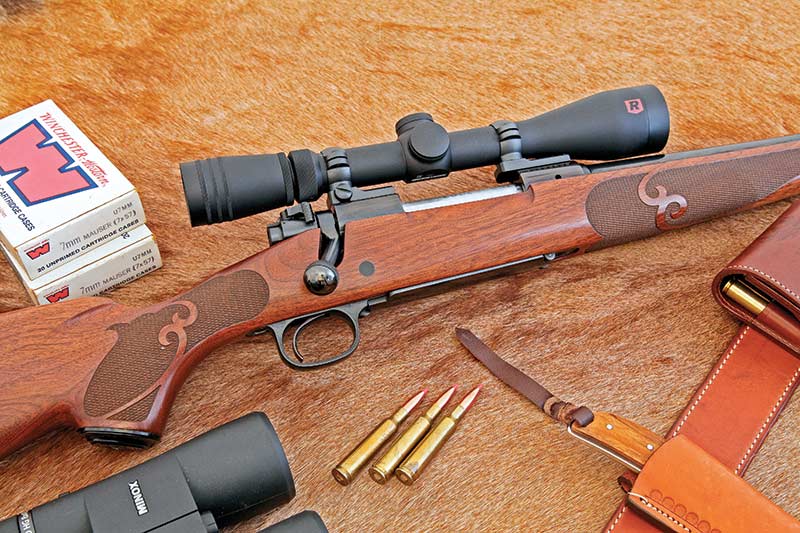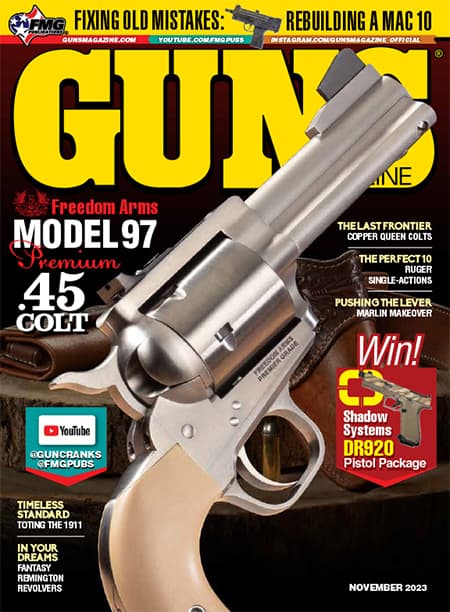Bean Counters
They Aren’t Necessarily The Villain
“Bean counters” seems to be a pejorative term in the rifle community, usually delivered with an implied sneer: “All was well with Company X until the bean counters came along and ruined everything.” The term seems to be mainly used by those who have never been involved in managing a business of any size, never had to meet a payroll, negotiate a capital or operating loan or deal with suppliers. I suppose if you work for wages doing what an employer tells you to do, the “bean counter” can seem like the enemy. It’s rather like someone who has smoked, drank, and overeaten for 50 years who blames the doctor for diagnosing their emphysema, cirrhosis and diabetes.
Critical Job
In any business, the most indispensable person is the bean counter, the financial manager. Any successful business has someone who understands finance, either by avocation or by training. A business or corporation is like a person in some respects. Just like a human, the first priority is to survive. Seems simple? It isn’t, which is why most businesses fail, some quickly and others more slowly.
Winchester is the classic example. The accepted narrative seems to be Winchester was the dominant maker of sporting arms after WWII. Then in 1964 the bean counters took over, dumped famous models such as the 12, 70 and 94, replaced them with cheap flimsy versions, running the business into the ground. I remember an article in Gun Digest in which the author said Winchester “massacred” its model lineup in 1964 and liked the term so much he used it roughly 850 times.
The reality is rather different. Prior to WWII, labor was cheap and readily available. Workers were grateful to have a job at all. Firearm production was based on cheap labor, including skilled tool and die makers. After WWII, some companies, notably Remington but also Savage, realized production methods had to be changed to make use of basic machine tools — mainly lathes — and reduce the need for skilled laborers.
Winchester didn’t change. They continued to use milling machines, complicated tooling setups, operated by skilled workers. Except skilled labor wasn’t cheap anymore. In the booming postwar economy, all sorts of manufacturers, from automotive and aeronautics to basic kitchen appliance makers, were desperately looking for skilled machinists. I can remember ads in magazines of the era such as Outdoor Life offering tempting lifestyles and wages to tool and die makers.
Make no mistake, there are plenty of old-timers (me, for example) who prefer the old ways. We love machined and polished steel, hard, straight-grained checkered walnut, hand fitting and tuning. These days I mainly buy guns made before 1960. I’m by no means the only one. But the fact is people like you and me are not typical gun buyers. Most buyers then and now simply want a reliable gun and their primary interest is in price
Cost Benefit
Through the ’50s and into the early ’60s, Winchester firearms cost more than models of similar utility from Remington and Savage, and the gap was increasing, while Winchester’s quality control got steadily worse. Older skilled workers were retiring and replacements, if they could be found at all, were not cheap. To get them, Winchester had to compete not just within the firearms industry, but with Ford, GM, Boeing, McDonnell Douglas, John Deere …
Finally in the early ’60s, Winchester management called in financial experts — “bean counters.” After a thorough audit they found Winchester was losing money on most of the firearms they made. Raising prices would just have further slowed sales. The company was perilously close to collapse and only harsh medicine, and prompt action, could save it. The company dumped money-losing models like the Models 70, 12 and 94, replacing them with firearms cheaper to manufacture — less attractive to be sure but also, it must be noted, in some cases stronger and safer.
Simple Truth
Conventional wisdom says the market rejected the new models. Conventional wisdom is wrong. The new models far outsold the ones they replaced. Not only was Winchester producing and selling far more guns, they were making money on each one instead of losing.
For example, in the last five years of production (1959–1963), Winchester made just over 116,000 model 70s. From 1964 to 1968, nearly 226,000 of the new model 70 were produced. Between 1948–1963, Winchester made 1.086 million Model 94s. Over the same time period commencing in 1964, they made 2.818 million model 94s. Over a 60-year period from 1903 to 1963, Winchester made just under 912,000 semi-automatic .22 rifles, all models combined. The post-’64 models 190/290 production was 2,150,000 in just 13 years.
I hold no brief for the firearms made by Winchester from 1964 to about 1972 when quality of fit and finish improved. But they kept the company alive, into an era of new and cost-efficient manufacturing methods. As a result, we got such splendid firearms as the 9422 (1972), the model 70 Featherweight (1981), and the Classic model 70 of the early 1990s.
Without those despised bean counters, I am convinced Winchester would not have survived the ’60s. It would have gone the way of Parker Bros., L.C. Smith, Stevens, A.H. Fox, BSA, High Standard — either disappearing completely or being bought out by other gunmakers. And yes, there are bad bean counters just as there are bad doctors. It isn’t easy to run a successful business. In fact, it is very hard. It takes skills not many people possess — and it never gets any easier.






